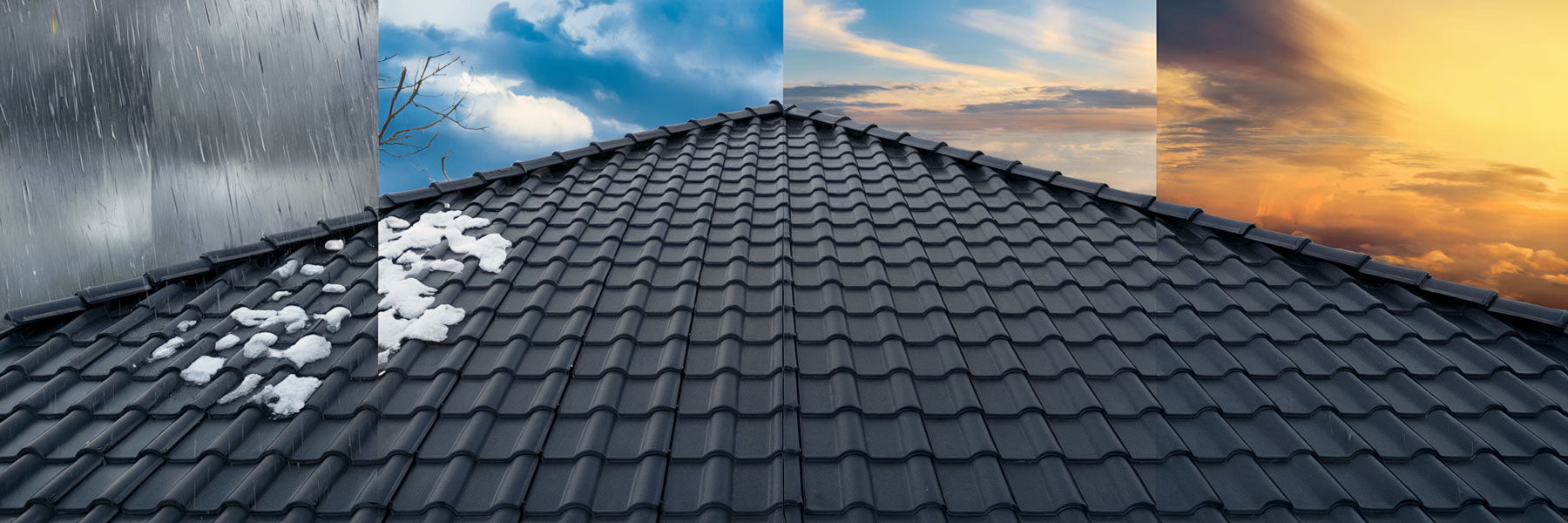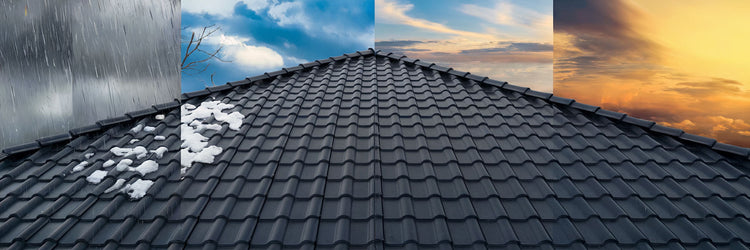Metal Roof Benefits: Durability
Metal roofs have emerged as a premier roofing solution, offering unmatched durability and longevity compared to traditional materials like asphalt shingles. Their ability to withstand extreme weather, resist environmental degradation, and maintain structural integrity over decades makes them a critical investment for homeowners, particularly in regions with harsh climates such as Ontario. This article synthesizes research from industry experts, case studies, and material science to provide a detailed examination of the durability benefits of metal roofing systems.
Lifespan and Long-Term Performance
Extended Service Life in Diverse Climates
Metal roofs are renowned for their exceptional lifespan, often exceeding 50 years with proper installation and maintenance. In Ontario, where temperature fluctuations and severe weather are common, studies indicate that metal roofs can last 25–50 years under standard conditions, with some systems reaching 70–80 years when maintained appropriately. This longevity starkly contrasts with asphalt shingles, which typically require replacement every 15–25 years. The extended service life is attributed to the inherent properties of metals such as steel, aluminum, and copper, which resist corrosion, UV degradation, and biological growth.
For instance, standing seam metal roofs—featuring interlocking panels and concealed fasteners—are engineered to endure thermal expansion and contraction, a critical factor in regions like Ontario where temperatures swing from -30°C in winter to 30°C in summer. Copper and zinc roofs represent the pinnacle of durability, with lifespans exceeding 100 and 80 years, respectively, due to their natural resistance to oxidation and corrosion.
Resistance to Extreme Weather Conditions
Performance in Winter Climates
Metal roofs excel in snowy environments like Ottawa and rest of Ontario, where heavy snow loads and ice dams pose significant risks to traditional roofing materials. Their smooth, non-porous surfaces facilitate rapid snow shedding, reducing structural stress and preventing ice accumulation at eaves. This capability is enhanced by protective membranes and insulation layers that mitigate heat loss, further minimizing ice dam formation. Field reports from Stewart Roofing in Ottawa highlight that metal roofs eliminate the need for manual snow removal, a common maintenance burden with asphalt shingles.
Wind and Storm Resilience
Metal roofing systems are engineered to withstand wind speeds exceeding 120 mph, making them ideal for hurricane-prone areas and regions susceptible to severe thunderstorms. The interlocking panel design distributes wind forces evenly across the roof surface, while concealed fasteners prevent uplift during gusts. In contrast, asphalt shingles are prone to tearing and detachment under similar conditions. Post-storm analyses, such as those following Hurricane Irma in Florida, have demonstrated that metal roofs suffered minimal damage compared to other materials, prompting some municipalities to mandate metal roofing in high-wind zones.
Hail and Impact Resistance
Laboratory tests and real-world observations confirm that metal roofs resist hail damage far more effectively than asphalt or wood. A 24-gauge steel roof can withstand one-inch hailstones without sustaining functional impairment, while copper and aluminum panels exhibit similar resilience. This durability reduces insurance claims and repair costs, particularly in regions like Alberta and Ontario, where hailstorms are frequent.
Material Resilience and Structural Integrity
Corrosion and Pest Resistance
The non-porous nature of metal roofing prevents water absorption, a common cause of rot and mold in wood and asphalt systems. Advanced coatings, such as galvanized zinc-aluminum alloys, provide additional protection against rust, even in coastal areas with high salinity. Metal roofs are also impervious to pests such as termites and squirrels, which often compromise traditional roofing materials.
Fire Resistance and Safety
As non-combustible materials, metal roofs achieve UL 263 Class A fire ratings, offering critical protection in wildfire-prone regions. Unlike asphalt shingles, which can ignite during lightning strikes or ember showers, metal roofs dissipate heat and resist ignition, enhancing household safety.
Low Maintenance and Cost-Effectiveness
Reduced Upkeep Requirements
Metal roofs demand minimal maintenance compared to asphalt or wood systems. Their smooth surfaces inhibit moss and algae growth, eliminating the need for chemical treatments or frequent cleaning. Annual inspections to check for loose fasteners or debris accumulation are typically sufficient to maintain performance. This low-maintenance advantage is particularly valuable in remote or hard-to-access installations.
Long-Term Financial Benefits
While the upfront cost of a metal roof is 2–3 times higher than asphalt shingles, the long-term savings are substantial. Homeowners avoid recurring replacement costs, and energy-efficient reflective coatings can reduce cooling expenses by 10–25%. Additionally, metal roofs often qualify for insurance discounts due to their storm resilience and fire resistance.
Environmental and Sustainability Considerations
Recyclability and Energy Efficiency
Metal roofs contain 25–95% recycled content and are fully recyclable at the end of their lifespan, diverting waste from landfills. Their reflective surfaces reduce urban heat island effects and lower energy consumption, aligning with global sustainability goals. In Ontario, where energy costs are rising, metal roofs contribute to passive heating and cooling, enhancing year-round comfort.
Adaptation to Climate Change
As climate change intensifies weather extremes, metal roofs offer a resilient solution. Their ability to withstand temperature swings (-40°C to 40°C), heavy precipitation, and high winds makes them a strategic choice for future-proofing homes. Innovations such as cool roof coatings and integrated solar panels further enhance their adaptability to evolving environmental challenges.
Conclusion
Metal roofs represent a paradigm shift in residential and commercial construction, combining unparalleled durability with long-term economic and environmental benefits. Their resistance to extreme weather, minimal maintenance needs, and lifespan exceeding half a century make them a prudent investment for homeowners in Ontario and beyond. As climate resilience becomes increasingly critical, metal roofing systems stand out as a cornerstone of sustainable building practices. Future research should focus on optimizing installation techniques and expanding recycling infrastructure to maximize the ecological advantages of this transformative technology.
Frequently Asked Questions (FAQs)
Q: How long do metal roofs really last?
A: Metal roofs can last 50–80 years, with some materials like copper exceeding 100 years. Proper maintenance further extends their lifespan.
Q: Do metal roofs corrode or rust over time?
A: No, modern metal roofs have protective coatings like galvanized zinc or aluminum that prevent rust and corrosion, even in coastal areas.
Q: Can metal roofs handle extreme weather conditions?
A: Absolutely! Metal roofs withstand heavy snow, strong winds over 120 mph, hail, and extreme temperatures, making them highly durable.
Q: Are metal roofs prone to dents from hail or falling branches?
A: Metal roofs are impact-resistant, with materials like 24-gauge steel able to withstand hail without significant damage.
Q: Do metal roofs require a lot of maintenance?
A: No, metal roofs require minimal maintenance. Regular inspections and occasional debris removal are enough to keep them in great shape.
Q: Will a metal roof outlast traditional asphalt shingles?
A: Yes! While asphalt shingles need replacement every 15–25 years, metal roofs last several decades longer, making them a better long-term investment.

